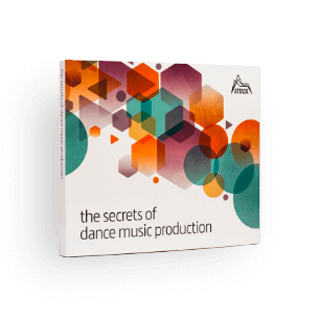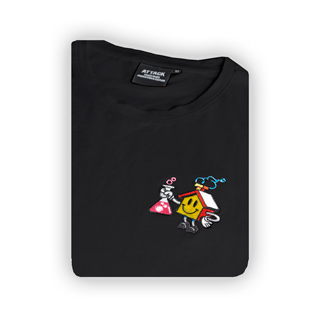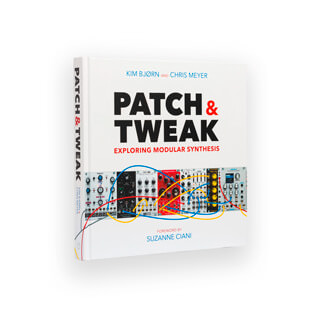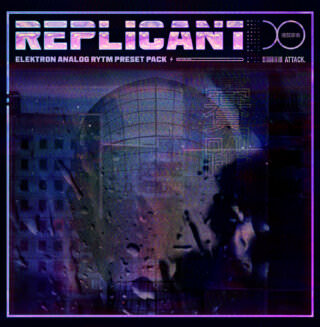With Making Vinyl on the horizon next week in Haarlem, Netherlands, co-founder Larry Jaffee reflects on the vinyl landscape, its recent turnaround, and why perhaps a “market correction” is inevitable.
The vinyl resurgence in the past decade defies all technological, economic, and ecological logic in the digital age and indisputably amounts to the most improbable comeback in the 21st century.
The revitalized industry will be congregating for Making Vinyl Europe in Haarlem, Netherlands, just outside of Amsterdam, and the home of one of Europe’s largest pressing plants, Record Industry, starting on Wednesday, 27 September. It’s the kick-off to what’s described as “The world’s first multi-day festival entirely dedicated to vinyl culture,” extending through the weekend.
Register for Making Vinyl here.
When the B2B conference Making Vinyl launched in 2017 with keynoter Jack White, who opened his Third Man Pressing in Detroit earlier that year, only 35 pressing plants existed worldwide. Now, 190 factories boast a collective capacity pumping out of nearly 200 million records annually.
A two-year global pandemic didn’t stand in the way of continued consumer demand.
Rapid facility expansions by already large operations, coupled with entrepreneurs sensing opportunity jumped on the bandwagon, recently reduced wait times for label orders to be shipped from 10 months to two or three months.
The day-and-a-half Making Vinyl program promises to deliver a status report on how manufacturers have fared in the face of considerable supply chain issues, raw materials shortages, and rising costs from production through retail. Speakers from the IFPI, Futuresource, and Discogs will provide statistical analysis of vinyl trends, while engineers and marketers will trade notes on the technical nuances of making and selling records, becoming more ecological, and a bright future ahead with Taylor Swift selling in the US alone almost 1 million vinyl copies of Midnights, her most recent album of new music.

Where did the vinyl comeback come from anyway?
Vinyl became obsolete by the end of the 1980s because record labels reinvented itself in the face of home entertainment changing with the advent of VHS, videogames, MTV, and personal computers, occupying leisure time. The music industry ushered in the more expensive compact disc – invented by Philips and Sony – by no longer accepting returns of unsold vinyl.
Then, the Internet’s file-sharing capability exposed by Napster was exacerbated by CD burners being standard PC features, catching the music industry asleep at the wheel. Instead, the Record Industry Association of America (RIAA) focused on guarding against DAT (digital audio tape), which became a professional recording format everywhere except Japan. CD’s lucrative quarter-century run was first disrupted by Apple Computer’s iPod and downloads from iTunes, only to be swamped by subscription-based streaming services Spotify, Apple Music, and Tidal, offering all you can eat for $10 a month.
Major retail chains selling music, including Tower Records, Virgin, and HMV (revived in 2022) failed en masse on both sides of the Atlantic. The remaining independent stores that sold mostly CDs wondered whether they had a future. In September 2007, representatives of less than ten stores attended a meeting in the US city of Baltimore, which created Record Store Day (RSD) a few months later.
At the time, some old-school DJs still spun specially pressed mixes rather than the more popular, less cumbersome digital rigs and limited quantities of audiophile records were released, but they did not even register a blip on the radar screen. RSD managed to convince labels to offer limited editions of vinyl that captured collectors’ fancy. Every year, more stores and labels participated, resulting in exponential sales for a format that was resurrected from oblivion.
The CD industry was dramatically different than vinyl today because it was price-driven.
Competing vinyl pressing plants cooperative, not divisive
The vinyl rebirth offers a spirit of cooperation not present in CD manufacturing, plagued by price gouging among replicators, which is why the shiny disc quickly devolved into a commodity that ultimately made profits elusive.
“The CD industry was dramatically different [than vinyl today] because it was price-driven,” Making Vinyl president Bryan Ekus pointed out. “People were competing on [wholesale] price for tens of cents to get particular orders.”
Vinyl pressing plants are now determined not to make such a mistake while they face the aforementioned challenges together. A new organization, Vinyl Record Manufacturers Association (VRMA) made sharing information a priority, which will ultimately help the industry at large.
“What we do is so nuanced, and manufacturing records is so technically difficult on every level,” explains VRMA president Dustin Blocker, who co-owns a Texas-based pressing plant.
Blocker points out that VRMA’s focuses on collaboration, standardization, education, and advocacy. Aiming to improve members’ quality control, VRMA’s press operator manual incorporates information from vintage US pressing machines manufactured by SMT and Hamilton and current equipment suppliers Canada’s Viryl and Sweden’s Phoenix Alpha.
“How you make good records is not machine-specific, Blocker explains. “Holistically, you’re looking at [everything from] temperatures to how [vinyl] flows through a press.”
How you make good records is not machine-specific. Holistically, you’re looking at everything from temperatures to how vinyl flows through a press.

New vinyl sales are likely far bigger than what’s reported
The vinyl industry clearly requires a better way to quantify the volume of records actually being produced instead of the estimates and weighted projections often taken as gospel by the mainstream media. Since retailers cannot return unsold stock (I.e., they order what they’re fairly confident will sell).
The IFPI, in its 2022 Global Music, cited “vinyl’s upward trajectory,” sustained for more than a decade with continued growth of 17.1 percent.”
Regarding the UK alone, the most current data from BPI reported Vinyl LPs up 3.1 percent to £119.5 million in 2022. Vinyl now accounts for 55 percent of revenues from physical sales, eclipsing CD income for the first time since 1987, offsetting a 23.7 percent drop in CD revenue to £89.5 million.
In the US, leading research firm Illuminate (formerly known as Nielsen Music) reportedly uses a small sample size of a few hundred retail outlets among the more than 1,500 record stores and e-commerce vendors. Illuminate’s numbers fall far short of volumes reported to Making Vinyl.
“Knowing the growth that’s happening in and around Nashville and Memphis, those guys alone are putting out more than what the stats are reporting,” Blocker explains, referring to United Record Pressing (URP) in Nashville, GZ Vinyl in the Czech Republic (which opened Nashville Record Pressing and expanded Memphis Record Pressing).
For 2022, Luminate reported sales of 43.5 million LPs, up 4.2 percent from 41.7 million in 2021. In July, Luminate issued its half-year report for the first six months of 2023, reporting that vinyl sales jumped 21.7 percent with a volume of 23.6 million, up from 16.9 million for the first half of last year.
When asked earlier this year about its methodology for reporting vinyl sales, Luminate offered only a vague explanation:
“Overall, Luminate works with more than 500 data sources, including streaming / global streaming, physical sales, and more. In physical formats, we cover CDs, LPs, and cassettes. The Vinyl store strata is broken into several categories that span digital and chain; anything that would end up in a Billboard chart in the US comes through Luminate, and the main categories are below”:
- Chain
- Mass Merchant
- Indie
- Internet Mail Order
- Non-Traditional
Only one supplier – based in Japan – furnishes the entire world with lacquers required to start the record production process.

Clickbait articles ignore the vinyl industry’s resilience
Two articles ushered in 2023 with headlines that the vinyl fad was over because the record industry couldn’t keep up with consumer demand. “Did the Music Business Just Kill the Vinyl Revival?” makes generalizations based on faulty assumptions that fail to recognize the resilience and massive undertaking in 2022 to reach a sales volume of US$1 billion, a level last achieved in 1986, according to the RIAA. Despite the misleading headline, “The vinyl revival is coming to a crashing halt – but don’t blame Taylor Swift,” TechRadar acknowledges the recent strides made in improving vinyl manufacturing bottlenecks.
Shoddy reporting and faulty conjecture are nothing new. Just as Making Vinyl was getting ready to announce its debut event in 2017, a Wall Street Journal headline wrongly announced “The Vinyl Boom is Over.”
That’s not saying the vinyl industry today lacks substantial challenges. Only one supplier – based in Japan – furnishes the entire world with lacquers required to start the record production process.
Besides cutting a lacquer, the only other way to make a record is DMM (direct metal mastering) and such systems are also extremely rare, as are the lathes that cut lacquers; it’s all antiquated equipment.
We also need to ensure that we adhere to sustainability issues. With a simplistic view, it could be thought that the vinyl industry could be “wasteful,” but strides are being made using non-toxic, recyclable materials and new processes that reduce the carbon footprint. There have been many discussions around this area across many of our panels – and how to keep our finger on the pulse regarding materials and ways to stay sustainable.
But while the pressing plants have substantially reduced wait times to deliver orders, anecdotally, Making Vinyl has heard reports about hardware cancellations and even bankruptcy. Some newcomers with only one or two pressing machines wonder if there’s enough label business to sustain their operations. Like all others, this business should not be perceived vinyl as a “get rich quick” opportunity and forget such expectations.
Like any maturing business, perhaps a “market correction” is inevitable and turns out better than a “survival of the fittest” landscape.
Larry Jaffee is the New York-based author of ‘Record Store Day: The Most Improbable Comeback of the 21st Century’ and co-founder of Making Vinyl.




